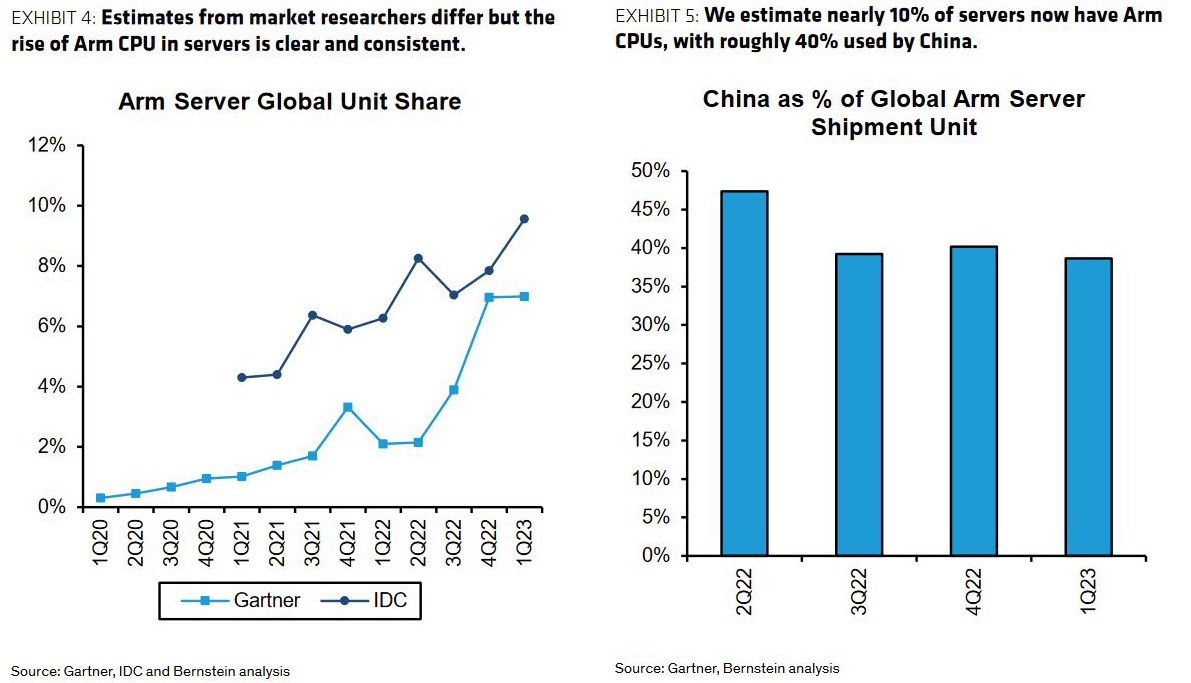
Due to increasing difficulty in obtaining high-performance x86 servers, Chinese datacenter companies are ramping up the adoption of Arm-based system-on-chips. Currently, 40% of Arm-powered servers are used in China, according to investment banking firm Bernstein, as reported by @EricJhonsa.
The vast majority of servers are running on x86 processors from AMD and Intel. Still, Arm-based SoCs are gaining market share now that multiple companies, including AWS, Ampere, Google, Fujitsu, Microsoft, and Nvidia have developed and/or adopted Arm-powered SoCs. But while U.S.-based hyperscalers are slowly adopting Arm-based processors in their datacenters, Chinese companies are more inclined to use them because they may not always be able to procure Intel's Xeon or AMD's EPYC.
Multiple companies in China develop Arm-based SoCs for client and datacenter processors, including Alibaba, Huawei, and Phytium.

Both Huawei and Phytium are blacklisted by the U.S. government and cannot have access to leading-edge process technologies used by TSMC. As a result, they cannot offer processors that challenge market leaders in terms of performance. While Alibaba's T-Head can use the latest TSMC innovations, just like other Chinese companies, it cannot license Arm's Neoverse V-series CPU cores for high-performance computing due to export control rules of the U.S. and U.K. as well as the Wassenaar arrangement on export controls for dual-use goods and technologies and conventional arms.

While Arm's cores make a lot of sense for Chinese companies, many chip designers, including Huawei, are looking towards RISC-V. RISC-V is a rapidly developing open-source instruction set architecture (ISA) that is not restricted and can enable highly-custom general-purpose cores designed for very specific workloads.
But for now, the Armv8 and the Armv9 instruction set architectures have several advantages over RISC-V. The Arm ISA is supported by a vast number of influential companies like AWS, Google, Nvidia, Microsoft, Qualcomm, and Samsung, and these companies know how to ensure that the software ecosystem supports their CPUs, so adoption of Arm will continue to expand in the datacenter space for years to come.







